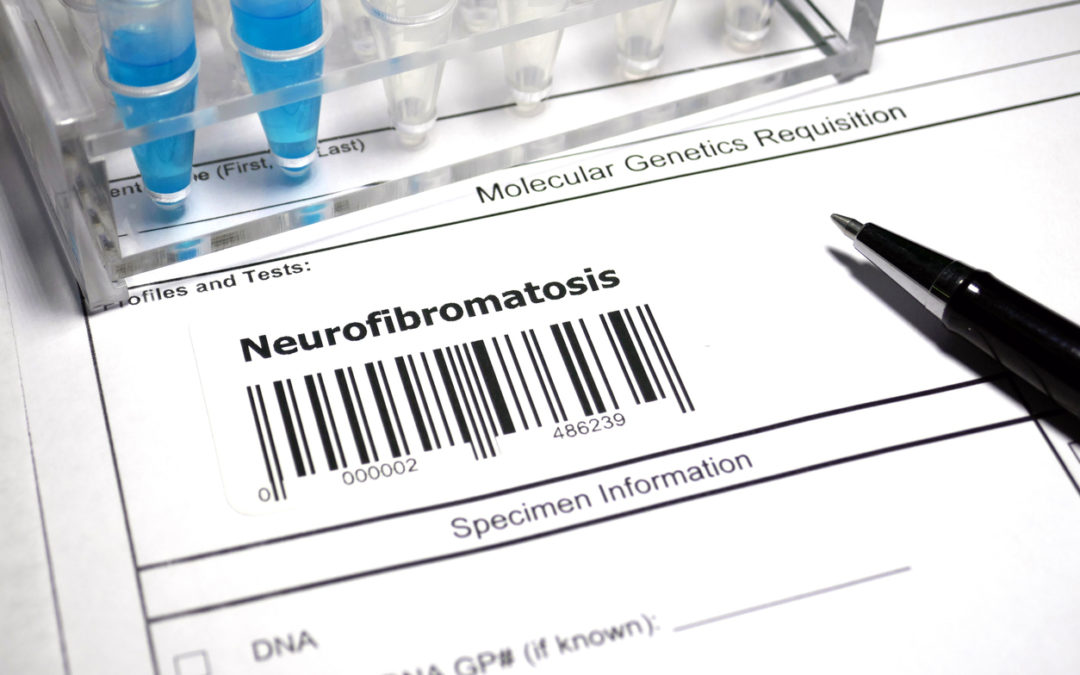The nervous system is essentially the body’s electrical wiring system, made up of the brain and a complex connection of specialized cells called neurons that transmit signals between different parts of the body. They work together to control all of the body’s functions, such as moving, breathing, talking, swallowing and learning.There are over 600 different diseases of the nervous system that result from a variety of causes including infections, exposures, and genetics. One genetic disorder of the nervous system is neurofibromatosis, which affects how nerve cells form and grow. People with this condition have the option of using preimplantation genetic testing (PGT), also referred to as preimplantation genetic diagnosis or PGD, for family planning to avoid passing the condition on to a future generation.
What is neurofibromatosis?
Neurofibromatosis (NF) causes tumors to grow on nerve tissue throughout the nervous system, including the brain, spinal cord and any nerve radiating throughout the body. Most of these tumors are non-cancerous (benign). Complications develop when these benign tumors press on a nerve. There is a small chance that some of these tumors can become cancerous (malignant). .
There are three types of neurofibromatosis, with type 1 being the most common and potentially the most serious. About 1 in 3,000 people are born with neurofibromatosis type 1. Symptoms are noticeable at birth or within the first ten years of life. Most individuals have harmless flat, light-brown spots on their skin called cafe-au-lait spots, so named because their spots look like “coffee with milk”. Other common features include freckling in the armpit and/or groin area, harmless bumps on the iris of the eye called Lisch nodules, and shorter than average height with larger head size. More serious symptoms can include learning disabilities, bone deformities, tumors on the optic nerve called optic gliomas, and benign tumors called neurofibromas. Women who have neurofibromatosis type 1 are also at an increased risk for breast cancer.
Neurofibromas are typically the size and shape of a pea and grow just under the skin. But they can also grow inside the body and cause pressure on other tissues. Sometimes a growth involves multiple nerves and can become very large. These are called plexiform neurofibromas. They can cause pain and numbness when they form on the spinal cord. They can also cause disfigurement when they form on the face or other areas of the body. The chance that one of these tumors will become malignant is about 7 percent.
Some individuals with neurofibromatosis type 2 have café-au-lait spots or skin tumors resembling those seen in type 1. Most people with type 2 develop tumors on the eighth cranial nerve (called acoustic neuromas or vestibular schwannomas), which can cause ringing in the ears, problems with balance, and progressive hearing loss.The third type of neurofibromatosis, called schwannomatosis, is the rarest form of the disease. Affected individuals develop multiple tumors consisting of Schwann cells (called schwannomas) on cranial, spinal, and peripheral nerves which can cause severe pain.
How is neurofibromatosis inherited?
Neurofibromatosis type 1 is caused by a mutation in the NF1 gene. The NF1 gene codes for a protein called neurofibromin, which helps control cellular growth. Mutations in this gene can cause uncontrolled cell growth.
Neurofibromatosis type 1 is autosomal dominant, meaning that only one mutation in an NF1 gene is needed to cause the disease. About 50% of affected individuals inherit the disease from a parent with the disease. But, the other 50% have a new mutation (de novo) where they become the first person in their family with the disease. Typically this occurs because there is a random mutation prior to conception within the NF1 gene in the egg or sperm cell that went on to form the embryo. Individuals with a de novo mutation have a 50% chance to have a child who inherits the NF1 mutation.
Symptoms and severity of the disease can vary from person to person, even within the same family. Thus, it is sometimes difficult for genetic specialists such as genetic counselors to help the family predict how the disease will affect the next generation. Genetic testing is available to identify mutations within the gene.
What is the treatment for neurofibromatosis?
While there is no cure for neurofibromatosis, symptoms that can cause complications should be closely monitored. A referral to a medical genetics specialist is suggested so that the family can develop a medical management plan. Surgery to remove part or all of the benign tumors may be an option for cosmetic reasons or when compression of nearby tissues occurs. Cancer screening is also an important component of the medical management plan.
Is preimplantation genetic testing (PGT) available for neurofibromatosis?
Yes. PGT is available for individuals who have any form of neurofibromatosis, as long as the mutation that causes the disease has been identified. Studies have demonstrated that PGT has lead to the birth of babies free from the disease. Because of the complexity of performing PGT for genetic disease, working with fertility clinics who are experienced with this technology is essential.
For more information about neurofibromatosis, check out the following resources:

Leslie is a board-certified clinical genetic counselor and former Program Manager for the preimplantation genetic testing (PGT) program of the ORM Genomics team and former Project Manager for SharingHealthyGenes.com. She completed her Bachelor’s degree at DePauw University and her Master’s degree in Genetic Counseling at the University of Texas Graduate School of Biomedical Sciences at Houston. Since graduating in 2000, she has worked as a clinical genetic counselor in several specialties including prenatal, pediatric and cancer genetics and has been very involved with the National Society of Genetic Counselors.
